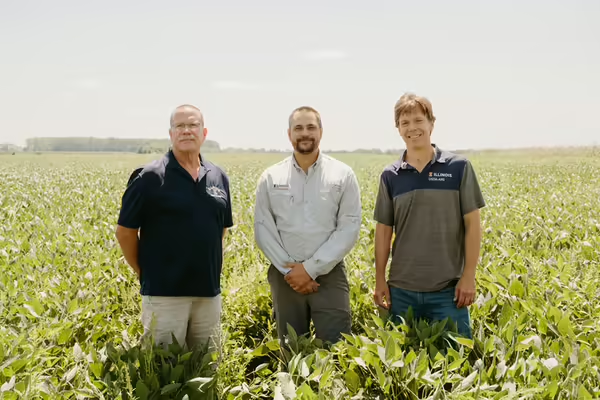
URBANA, Ill — Drones can now detect subtle soybean canopy damage from dicamba at one ten-thousandth of the herbicide’s label rate — simulating vapor drift — eight days after application. This advancement in remote sensing from the University of Illinois Urbana-Champaign provides a science-based tool to accurately detect and report crop damage at the field scale, reducing human error and bias.
It’s a tool Aaron Hager has been calling for since dicamba-tolerant soybeans — and the accompanying surge in dicamba use and off-target damage — arrived on the scene in 2016.
“We would have an annual teleconference with the Environmental Protection Agency where they would ask how extensive the damage was and whether their label modifications were making a difference. They were relying on pesticide misuse complaints, but there are a lot of factors going into whether someone makes a complaint,” said Hager, professor in the Department of Crop Sciences and an Illinois Extension Specialist; both units are part of the College of Agricultural, Consumer and Environmental Sciences at Illinois.
“On the last call we did in 2020, we still didn’t have a way to quantify the magnitude of what was really happening,” he said. “Now we do.”
Hager and his colleagues calibrated sophisticated cameras mounted on drones to detect damage on sensitive soybean canopies treated with one ten-thousandth, one three-thousandth, one-thousandth, and one three-hundredth of dicamba’s label rate. These rates represent exposure from vapor drift, or volatilized, dicamba at one extreme and particle drift at the other. After flying drones over the fields and assessing the damage, the team reported their findings in Pest Management Science.
Read the full article from the College of ACES.
University of Illinois Extension develops educational programs, extends knowledge, and builds partnerships to support people, communities, and their environments as part of the state's land-grant institution. Extension serves as the leading public outreach effort for University of Illinois Urbana-Champaign and the College of Agricultural, Consumer and Environmental Sciences in all 102 Illinois counties through a network of 27 multi-county units and over 700 staff statewide. Extension’s mission is responsive to eight strategic priorities — community, economy, environment, food and agriculture, health, partnerships, technology and discovery, and workforce excellence — that are served through six program areas — 4-H youth development, agriculture and agribusiness, community and economic development, family and consumer science, integrated health disparities, and natural resources, environment, and energy.